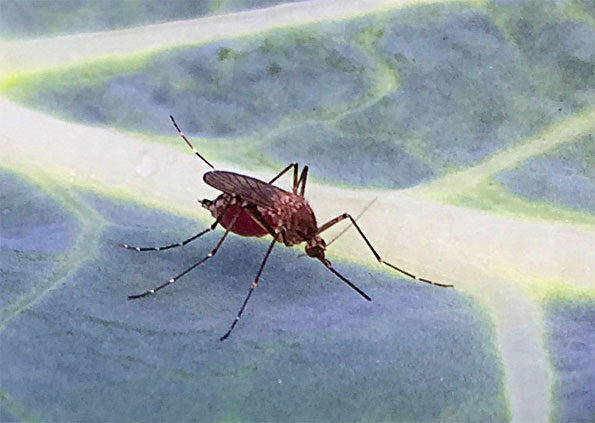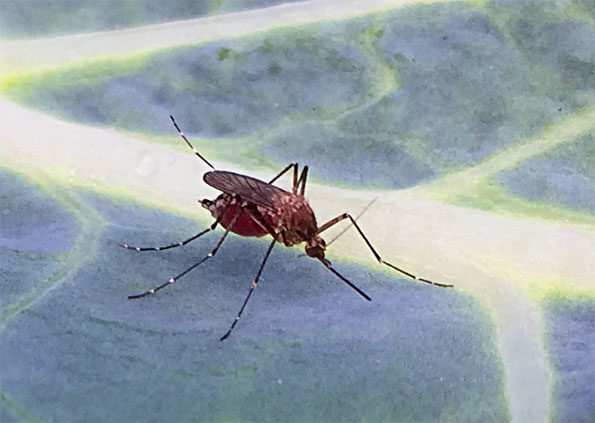
The Illinois Department of Public Health (IDPH) has confirmed the first human case of West Nile virus reported in Illinois for 2017. A Will County resident in his 60s became ill at the end of June 2017, according to an IDPH release on Thursday, July 20, 2017
“This is typically the time of year we start to see human cases of West Nile virus in Illinois,” said Illinois Department of Public Health (IDPH) Director Nirav D. Shah, M.D., J.D. “Although the flooding in northeastern Illinois may be producing a large number of floodwater mosquitoes, those mosquitoes do not carry West Nile virus. However, the hot, dry conditions we’ve been seeing around the rest of Illinois, which leave small, stagnant pockets of standing water, create ideal breeding sites for the type of mosquito that does carry West Nile virus.”
ALso, the positive test for trapped mosquitoes with West Nile virus occurred on July 20, 2017 in McHenry County in the 60156 Zip Code.
Only Jo Daviess County and Stephenson County in far northwest Illinois have previously reported positive tests for mosquitoes with West Nile Virus in 2017.
The first human case of West Nile virus in 2016 was reported early in the year, on June 6, 2016. Last year, 61 counties in Illinois reported a West Nile virus positive mosquito batch, bird and/or human case. For the 2016 season, IDPH reported 155 human cases (although human cases are underreported), including six deaths.
Monitoring for West Nile virus in Illinois includes laboratory tests for mosquito batches, dead crows, blue jays, robins and other perching birds, as well as testing humans with West Nile virus-like symptoms. People who observe a sick or dying crow, blue jay, robin or other perching bird should contact their local health department, which will determine if the bird will be picked up for testing.
West Nile virus is transmitted through the bite of a Culex pipiens mosquito, commonly called a house mosquito, which has picked up the virus by feeding on an infected bird. Common symptoms include fever, nausea, headache and muscle aches. Symptoms may last from a few days to a few weeks. However, four out of five people infected with West Nile virus will not show any symptoms. In rare cases, severe illness including meningitis or encephalitis, or even death, can occur. People older than 50 and individuals with weakened immune systems are at higher risk for severe illness from West Nile virus.
While IDPH is also monitoring for Zika virus, which is primarily transmitted through the bite of a mosquito, the main type of mosquito that carries Zika virus, Aedes aegypti, is different and is very rarely found in Illinois. However, taking some simple precautions can help you avoid mosquito bites, regardless of the type of mosquito or the diseases they carry.
 A locally-sighted mosquito, possibly an Inland Floodwater Mosquito (Aedes vexans), Asian Tiger Mosquito (Aedes albopictus) or Yellow Fever Mosquito (Aedes aegypti) on Broccoli leaf in Arlington Heights, Illinois.
A locally-sighted mosquito, possibly an Inland Floodwater Mosquito (Aedes vexans), Asian Tiger Mosquito (Aedes albopictus) or Yellow Fever Mosquito (Aedes aegypti) on Broccoli leaf in Arlington Heights, Illinois.
According to the Illinois Department of Public Health, Aedes aegypti is rarely found in Illinois. Aedes aegypti is capable of transmitting West Nile Virus, and is the main concern as the vector of Zika virus in southeastern Florida and Texas.
Aedes albopictus has been reported from 37 Illinois counties, mostly in the southern two-thirds of the state. This is a “container-breeding” mosquito that uses water-filled buckets, old tires, and similar containers for larval production; it does not breed in ditches, marshes, or other water impoundments in the ground. Additional survey work is needed to determine the presence and public health importance of Aedes albopictus in Illinois.
Aedes albopictus is believed to be an important bridge vector of West Nile Virus in the souteastern USA.
PRECAUTIONS …
Precautions include practicing the three “R’s” – reduce, repel, and report.
REDUCE – make sure doors and windows have tight-fitting screens. Repair or replace screens that have tears or other openings. Try to keep doors and windows shut.
Eliminate, or refresh each week, all sources of standing water where mosquitoes can breed, including water in bird baths, ponds, flowerpots, wading pools, old tires, and any other containers.
REPEL – when outdoors, wear shoes and socks, long pants and a long-sleeved shirt, and apply insect repellent that contains DEET, picaridin, oil of lemon eucalyptus, or IR 3535 according to label instructions. Consult a physician before using repellents on infants.
REPORT– report locations where you see water sitting stagnant for more than a week such as roadside ditches, flooded yards, and similar locations that may produce mosquitoes. The local health department or city government may be able to add larvicide to the water, which will kill any mosquito eggs.
See also …
Sardelis MR1, Turell MJ, O’Guinn ML, Andre RG, Roberts DR. Vector competence of three North American strains of Aedes albopictus for West Nile virus. J Am Mosq Control Assoc. 2002 Dec;18(4):284-9.
